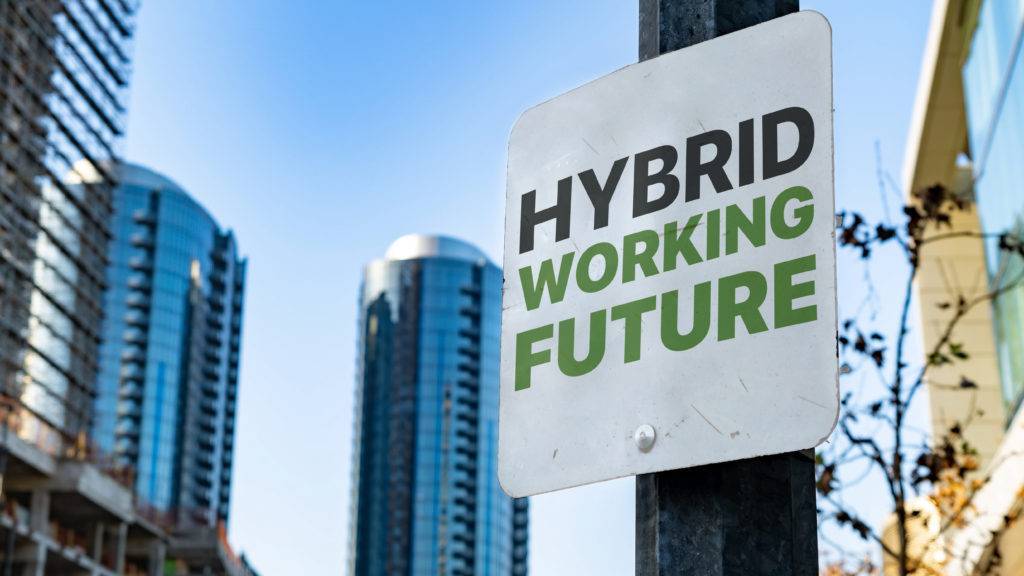
If you’re on LinkedIn, the likelihood is that you’ve seen a lot of chatter around the topic of hybrid working.
The statistics don’t lie. For many, flexibility is a priority now, with a new report from the Office for National Statistics showing that 85% of employees working from the comfort and confines of their homes wanted to move to a hybrid working model and approach of both home and office working in the future.
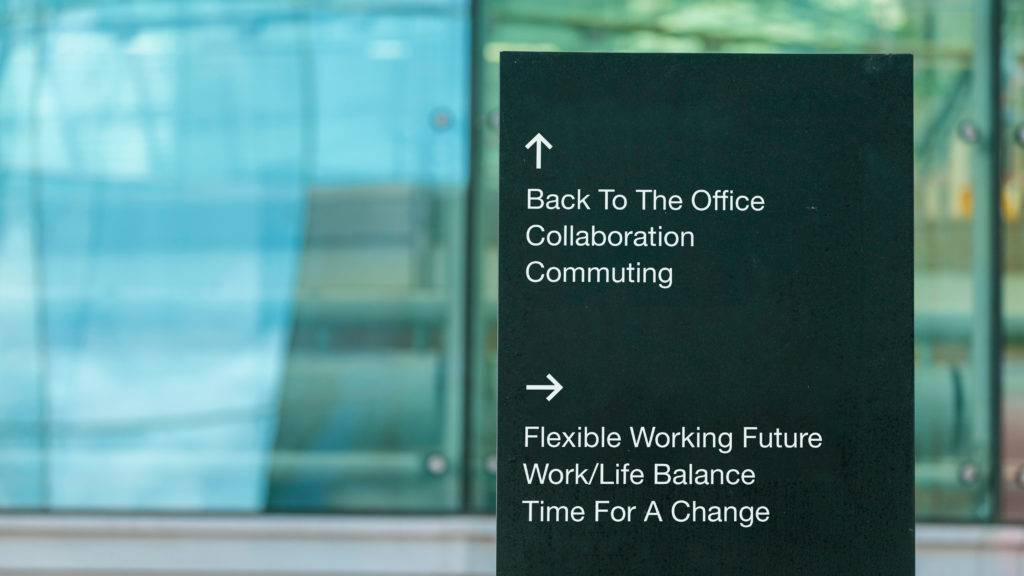
However, entertainment is not exempt from this conversation.
As a country, we’re blessed with so many unique and historic facilities that are used to host world-class events. They are also hubs for business meetings of all sizes.
That was the case prior to the pandemic. It most certainly will be after, but with a difference – that difference being the expectation to be able to dial in and attend an event or meeting from anywhere in the world and be able to do so without encountering issues.
It’s our opinion that those conventions that are able to accommodate that can achieve that will thrive in a post-pandemic future. Here at Performance Networks, we’ve had the chance to work closely with the teams at Manchester Central Convention Complex and Alexandra Palace, supporting them in their journey to become modern and hybrid facilities.
In this article, we explore what we’ve learned and also look at the best advice and tips we can pass on as a wireless network solution service provider.
Firstly, what is hybrid working?
Since the pandemic, our attitude towards work has changed and it’s not going to go back. Working the straight 9am until 5pm, five days a week in the office is a thing of the past.
Sure, it still exists. But people crave the flexibility they previously didn’t have. The pandemic pushed businesses of all shapes and sizes and industries to adopt a working from home mentality and, for most, it proved to be successful.

At its core, the term hybrid working leans against flexibility. It centres on team members having the choice where they want to work from – be it from an office, home, or even somewhere else – and working core hours that allow them to better juggle the demands of life alongside the demands of work easier.
While hybrid is a term we use for working now, it’s also a term that should be adopted for entertainment. Technology has allowed us to embrace events, no matter where they’re being held, digitally and being able to accommodate both different types of audience – present and virtual – is vital to the future of work and the industry.
What’s the issue facing conventions?
Most of us experienced Christmas 2020 – the online work event that sounded fun on the itinerary but in reality didn’t live up to expectation.
Convention centres up and down the UK attempted to host virtual Christmas parties in order to make up for the real thing being cancelled. But they fell flat, not because the entertainment wasn’t up to standard but more because of how it was delivered.
Because many of them didn’t have the right infrastructure in place, they ran into tech issues. Streams cut out. Virtual audience members ran into issues attending.
Virtual rooms were overbooked. Engagement was more hassle than it was worth. In the end, more time was spent by hosts apologising for ‘technological issues’.
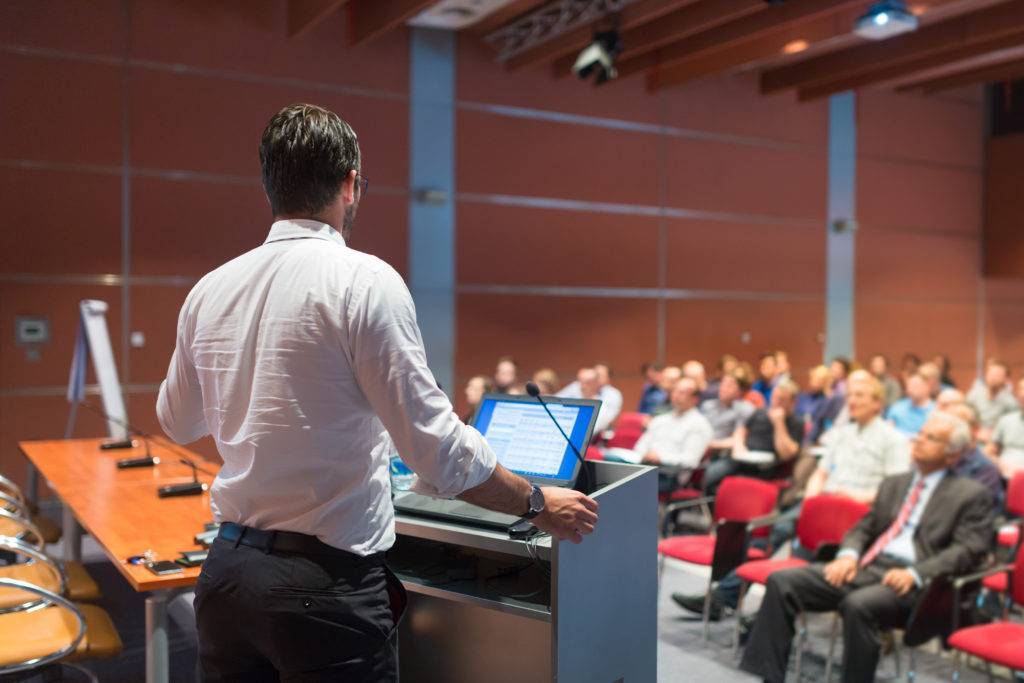
Those issues, though, were borne out of not having the right infrastructure in place.
Yes, conferences of the near future will have people in attendance but possibly on a smaller scale. With remote working and entertainment becoming the new norm, the virtual audience isn’t going away and it is those centres that have the ability to cope with that dynamic hybrid working and entertainment that will thrive.
The ability to stream is not going to be new to our conferences, but what may be different is how many people they’re streaming to. WiFi is a crucial part of that, in the sense that it needs to be strong enough to deliver a high-resolution experience and be able to host a potentially huge audience.
There needs to be a consideration for the type of devices it will host, how cameras are hooked up and feeding back through the system, either wired or wireless.
Until now, conventions haven’t really had a need to think about this. It hadn’t entirely been a necessity. Until now.
What’s the solution: The tech investment shopping list
So, where do conventions need to start? The first thing to look at is whether you have the right bandwidth and infrastructure in place.
Is what you have currently installed flexible enough? Can it manage large capacities as well as smaller business meetings? This can be achieved through the help of Virtual Local Area Networks (VLANs).
Again, that’s just for starters. These are some of the other considerations convention centres will need to think about:
- Is your Internet connection good enough?Is it resilient?
- Do your firewalls & switches create any bottlenecks?
- The wifi signal strength
- What interference does it encounter
- Location of the access points – is it only covering the areas it needs to
- Roaming issues
- How many people(per area) does your facility need to house

We’re talking about the full range of improvements here. Those conventions that invest once to build a flexible and capable in-house solution will be the ones that will dominate the conference space moving forward, rather than those that operate on a case-by-case third-party basis.
Those wanting to hold a conference each have very specific requirements and those that boast flexible working and entertainment will become a selling point, rather than just relying on how grand their facility is. This capability is going to be a requirement in the future. It is going to be a key factor for organisers moving forward.
Case Study: Alexandra Palace
Alexandra Palace, widely known as the Ally Pally, is an iconic Grade II listed entertainment and sports venue in London that is renowned for hosting world-class events and first-class hospitality. We helped them turn into a modern hybrid working and entertainment venue.
It was built 1873 and prior to COVID-19 hosted approximately three million people per year across its facilities, which include nine multi-purpose function rooms, including the Great Hall and West Hall, and an international-sized ice rink.
So, what was the issue?
- Wifi signal strength was good in areas, in fact, it was too strong, which was causing interference
- Heavy WiFi interference was recorded. The 2.4GHz band was very congested as usual, but so was the 5GHz band due to sub-optimal configuration
- Sub-optimal placement and mounting of Access Points. They were also using the wrong type of antennas. This meant the Access Points weren’t always covering the areas they were meant to and contributing to excessive Co-Channel interference. This was shown using coverage maps per AP
- Roaming issues – clients “hanging on” and not roaming to the correct AP
- Low data rates and old standards being supported, causing slow downs
- Too many clients using the 2.4GHz range
- The Main Hall could not support the number of people and devices that were required for their large conference/events
With a WiFi system that had been in place since the 2012 Olympic Games, Alexandra Palace required a technical infrastructure upgrade to become a successful and modern hybrid working and entertainment venue.
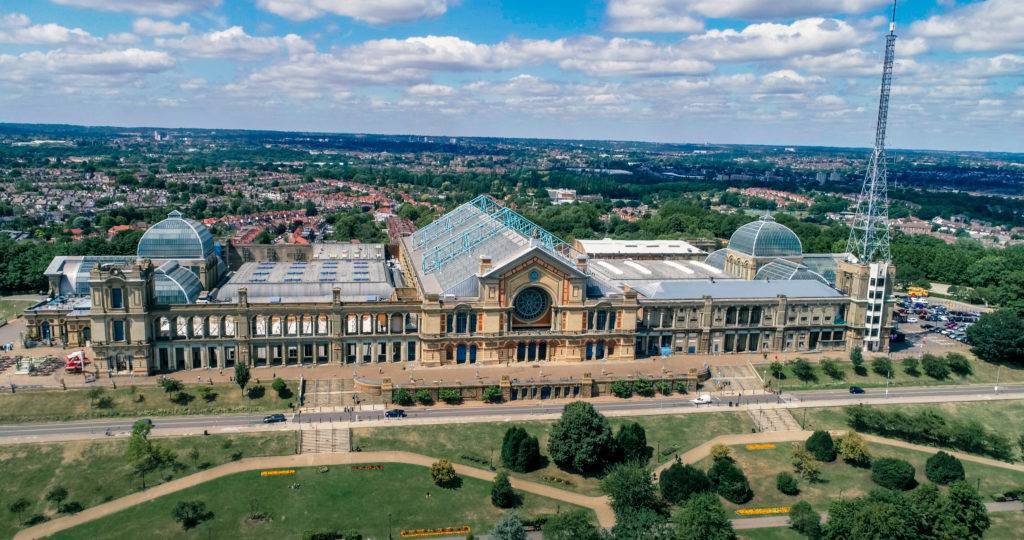
Another significant issue was posed by the fact it is a Grade II listed building. The listed and varied nature of the venue meant the design was crucial – particularly for areas such as the halls, theatre, and ice rink which are not only large and dense spaces with high ceilings, but also do not allow mounting of hardware.
That aside, like many event venues, it experienced issues when it comes to connectivity and striving to provide a reliable internet connection for visitors.
Common problems with WiFi at event venues include drop-outs and speed issues across WiFi networks and with a variety of devices.
What was our solution?
By installing a custom-fit Commscope Ruckus Big Dog solution, Ally Pally was guaranteed coverage and performance for the building’s management team, as well as visibility across the whole venue from one central location, covering inside and outside its facilities.
It was meticulously designed to cover the width and depth of the venue, providing a WiFi network built around capacity that is fit for purpose across all areas – no matter what or even how many events it is hosting at any one time.
Final thoughts
This pandemic has been an eye-opener for the UK’s convention and conference centres, particularly with regards to what it takes to host a virtual event seamlessly.
Although normality continues to return, that virtual aspect is not going to disappear. Hybrid working and entertainment is the future and it needs to be embraced. Businesses and event organisers are still going to want to go big and bold and in order to do that, convention centres need the right tech to support it.
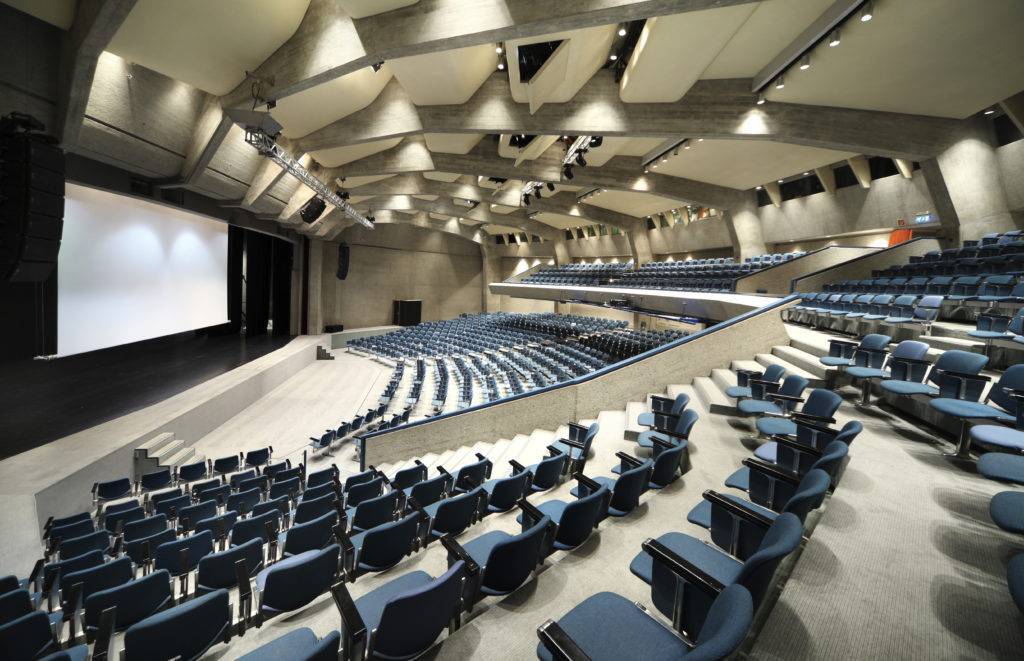
It comes back to the right infrastructure and having the ability to keep it flexible because that’s the way a lot of us work now, with flexibility – both full time and part time. That has changed forever.
Having the right backbone and equipment that is designed well enough, will allow businesses to be able to overcome these new online challenges that we’re facing off the back of this pandemic.